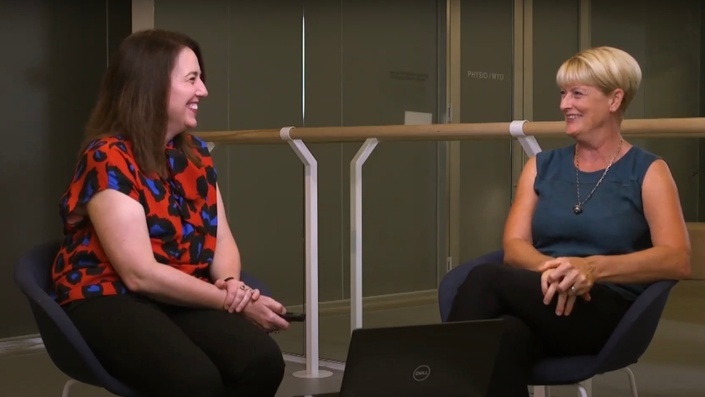During the late 90’s and early 2000’s in the USA, the cost of treating ankle sprains was estimated to be $US2 billion dollars per year (1). Here in Australia (specifically the state of Victoria), the cost of all sporting injuries and lower limb sporting injuries rose 24% and 26% respectively between 2004 and 2010, equating to an accumulated economic burden of $265million and $110million (2).
Such concerning trends in injury incidence and associated financial cost, has led research efforts into trying to identify potential injury risk factors that leads to future injury. Unfortunately, not one musculoskeletal screening test to date has been able to predict injury 100% of the time and screening has become polarising amongst some researchers and physiotherapists.
Previously when I worked with sporting teams, I would perform pre-season screening on all of the athletes in the club I work for, However, I completely understand why some people do not see the value in it, especially if 1) the screening process is done just for the sake of “screening”, 2) it is very lengthy in time and 3) involves expensive equipment.
My feeling on the topic of screening however is if it can be used in a way that can identify any deficits that may affect performance and/or increase the risk of injury, if a screening test can be performed in a quick and low cost manner, that has been shown in the literature that it can identify people at risk of future injury, and an intervention to reduce the risk can be implemented, then there is no harm done.
Two pre-season screening tools in particular that practitioners can use to identify those at risk of future lower limb injury, in particular lateral ankle sprains, that I would like to cover today, are The Star Excursion Balance Test (SEBT) and the the Y-Balance Test (YBT).
If you are unfamiliar with the SEBT or the YBT, they are tests whereby the subject is asked to stand and balance on 1 leg whilst reaching with the other leg as far as possible in many different planes – With the most common planes looked at in studies being the Anterior reach (ANT), Posterior-Medial reach (PM) and Posterior-Lateral reach (PL). When the tests are complete, the performance score is calculated using the following simple equations (reference: www.scienceforsport.com):
- Average distance in each direction (cm) = Reach 1 + Reach 2 + Reach 3 / 3
- Relative (normalised) distance in each direction (%) = Average distance in each direction / leg length x 100
From my review of literature, I found 7 studies that showed that the SEBT or the YBT was useful in identifying subjects across many different sports that were likely to sustain either a future lateral ankle sprain or other lower limb injury.
American Football athletes:
1) 606 American Football athletes (high school and college) were screened in the pre-season, which included the SEBT. Those that went on to sustain a future lateral ankle sprain were nearly 3x more likely to perform poorly on the SEBT-ANT (67% or less leg length). Furthermore, those that had a higher BMI (>27) AND who had poor performance on SEBT-ANT were 1.7x more likely to sustain a future lateral ankle sprain (4).
2) 59 American Football athletes (college) were screened in the pre-season using the YBT. Those that went on to sustain a lower limb injury during the season, were 3.5x more likely to do so if their composite YBT score (normalised score) was <89% of their leg length (5).

Various American College athletes:
3) 125 healthy recreational college athletes performed a series of screening tests, which included the YBT. The study found that there was a 48% increased risk of sustaining a future lateral ankle sprain with those who scored <80% leg length in the PL direction (6).
4) 184 college athletes were assessed on the YBT prior to their sporting season. It was found that players with an ANT asymmetry greater than or equal to 4 cm had a 2.2x greater odds of sustaining a lower limb injury compared to those that less than 4cm asymmetry on the ANT reach (10).
Basketball:
5) 235 high school basketball players were assessed on the SEBT prior to the start of the season. It was found that all players who had a greater than 4cm difference between limbs on the SEBT-ANT had a 2.7x greater risk of lower limb injury than those with a reach distance of 4cm or less. Furthermore for females, a composite reach score (normalised score) of less than 94% of their limb length, had a 6.5x increased risk of lower limb injury (7).
Netball:
6) 94 amateur female netball players were screened in the pre-season, which included the YBT. It was found that a score of 77% leg length or less in the PM direction was associated with a 4x greater risk of sustaining a future lateral ankle sprain (8).
Soccer/Football:
7) 74 male soccer players were screened in the preseason on the YBT. It was found that those with a greater than 4cm reach difference between limbs in the PM direction had a 3.86x greater risk of sustaining a non-contact soft tissue injury, Furthermore those that had a total YBT composite score (normalised score) <99% of leg length, were 2.25x more likely to sustain a future lower limb injury (9).
In summary, the SEBT and the YBT appear to be valuable pre-season screening tools to try and identify those at risk of lateral ankle sprains and lower limb injury. However, they aren’t perfect, and to assume that all your athletes will be 100% safe from all lateral ankle sprains in the future is setting yourself and your athlete up for disappointment. Furthermore the application and the generalisation of the SEBT/YBT should be carefully considered for each sport and sex, as there is a huge variance in SEBT/YBT performance and injury risk between sports and sexes.
In closing up my blog today, my take home message is this:
If you choose to screen your athletes, regardless of what screening process you undertake, identifying a player at risk of injury is only half the battle. Implementing an intervention to evoke a desired change to reduce the risk of injury (ie. improving ankle ROM, lower limb strength and neuromuscular control) is what really counts!!
I hope you enjoyed this blog. If you’re interested in learning more about the ankle, consider signing up to our Athletic Ankle Masterclass by clicking on the link here
References:
Dallinga JM, Benjaminse A, Lemmink KA. Which screening tools can predict injury to the lower extremities in team sports?: a systematic review. Sports medicine (Auckland, NZ). 2012 Sep 01;42(9):791-815. PubMed PMID: 22909185. Epub 2012/08/23. eng.
Finch CF, Kemp JL, Clapperton AJ. The incidence and burden of hospital-treated sports-related injury in people aged 15+ years in Victoria, Australia, 2004-2010: a future epidemic of osteoarthritis? Osteoarthritis and cartilage / OARS, Osteoarthritis Research Society. 2015 Jul;23(7):1138-43. PubMed PMID: 25749009. Epub 2015/03/10. eng.
Gribble PA, Terada M, Beard MQ, Kosik KB, Lepley AS, McCann RS, et al. Prediction of Lateral Ankle Sprains in Football Players Based on Clinical Tests and Body Mass Index. The American journal of sports medicine. 2016 Feb;44(2):460-7. PubMed PMID: 26646517. Epub 2015/12/10. eng.
Butler RJ, Lehr ME, Fink ML, Kiesel KB, Plisky PJ. Dynamic balance performance and noncontact lower extremity injury in college football players: an initial study. Sports health. 2013 Sep;5(5):417-22. PubMed PMID: 24427412. Pubmed Central PMCID: PMC3752196. Epub 2014/01/16. eng.
de Noronha M, Franca LC, Haupenthal A, Nunes GS. Intrinsic predictive factors for ankle sprain in active university students: a prospective study. Scandinavian journal of medicine & science in sports. 2013 Oct;23(5):541-7. PubMed PMID: 22260485. Epub 2012/01/21. eng.
Plisky PJ, Rauh MJ, Kaminski TW, Underwood FB. Star Excursion Balance Test as a predictor of lower extremity injury in high school basketball players. The Journal of orthopaedic and sports physical therapy. 2006 Dec;36(12):911-9. PubMed PMID: 17193868. Epub 2006/12/30. eng.
Attenborough AS, Sinclair PJ, Sharp T, Greene A, Stuelcken M, Smith RM, et al. The identification of risk factors for ankle sprains sustained during netball participation. Physical therapy in sport : official journal of the Association of Chartered Physiotherapists in Sports Medicine. 2017 Jan;23:31-6. PubMed PMID: 27665248. Epub 2016/09/26. eng.
Gonell AC, Romero JA, Soler LM. RELATIONSHIP BETWEEN THE Y BALANCE TEST SCORES AND SOFT TISSUE INJURY INCIDENCE IN A SOCCER TEAM. Int J Sports Phys Ther. 2015 Dec;10(7):955-66. PubMed PMID: 26673848. Pubmed Central PMCID: PMC4675196. Epub 2015/12/18. eng.
Smith CA, Chimera NJ, Warren M. Association of y balance test reach asymmetry and injury in division I athletes. Medicine and science in sports and exercise. 2015 Jan;47(1):136-41. PubMed PMID: 24870573. Epub 2014/05/30. eng.
Hooper TL, James CR, Brismee JM, Rogers TJ, Gilbert KK, Browne KL, et al. Dynamic balance as measured by the Y-Balance Test is reduced in individuals with low back pain: A cross-sectional comparative study. Physical therapy in sport : official journal of the Association of Chartered Physiotherapists in Sports Medicine. 2016 Nov;22:29-34. PubMed PMID: 27579805. Epub 2016/09/01. eng.
ACL & Knee Masterclasses
Did you enjoy this blog? Enrol in one of our Masterclasses about the ACL or the adolescent knee:



